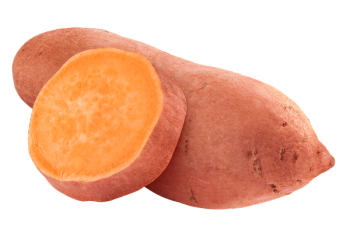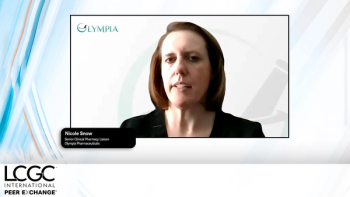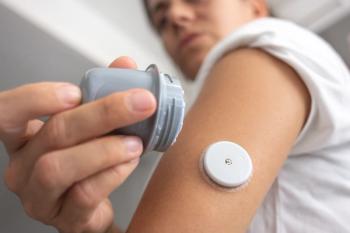
E-Separation Solutions
- E-Separation Solutions-10-25-2010
- Volume 0
- Issue 0
HPLC/UHPLC
While high performance liquid chromatography (HPLC) is the standard liquid separation technique in most analytical laboratories, ultrahigh-pressure liquid chromatography (UHPLC) is being implemented as a choice for faster, high-resolution analyses and cross-platform systems are now available. Participants in this discussion are Ling Bei and Dave Lentz of EMD Chemicals, Sergio Guazzotti of Thermo Fisher Scientific, and Elizabeth Hodgdon and Jeannine Jordan of Waters Corp.
While high performance liquid chromatography (HPLC) is the standard liquid separation technique in most analytical laboratories, ultrahigh-pressure liquid chromatography (UHPLC) is being implemented as a choice for faster, high-resolution analyses and cross-platform systems are now available. Participants in this discussion are Ling Bei and Dave Lentz of EMD Chemicals, Sergio Guazzotti of Thermo Fisher Scientific, and Elizabeth Hodgdon and Jeannine Jordan of Waters Corp.
What are the most recent developments in HPLC and UHPLC?
Bei and Lentz: UHPLC technology continues to revolutionize chromatography by breaking decades-old expectations of limits of performance. But chromatographers are now struggling with fewer budget dollars, and are limited in the number of traditional systems they can convert to UHPLC systems. By maximizing the utility of their existing HPLC systems through optimization of tubing volume in pumps and injectors, and careful choice of new-technology column packings, dimensions, and operating conditions, a very much wider range of applications is now possible. Users gain the flexibility and freedom they always wanted. “All-in-one” systems that bridge the total working pressure ranges between traditional HPLC systems and UHPLC systems are becoming more and more popular. A practical alternative approach to the same goal is to totally reject the idea that the continuing battle with more and more pressure is a necessary evil of particle-based ultraperformance and adopt the low-pressure solution by using silica monoliths on their traditional systems. Customers are finding creative and less expensive solutions to take advantage of current performance breakthroughs.
Guazzotti:In the areas of HPLC and UHPLC some of the recent developments include the introduction of flexible systems that can carry out HPLC and UHPLC in the same platform without sacrificing performance. This type of instrumentation has required significant developments in pumping technology. We are seeing a clear trend where HPLC and UHPLC instruments offer wider dynamic ranges of operation with excellent performance in all regimes. Parallel with these developments in pumping technology are developments in autosampler and detector technologies. As chromatographic separations employing UHPLC become increasingly shorter, peak widths become smaller requiring faster acquisition rates.
Working under UHPLC, mode volumes of injections are smaller than those employed in HPLC. This creates a consequent need to develop autosamplers that can provide good reproducibility for lower volumes of injections, as well as optical detectors with smaller flow-cell volumes to diminish possible dispersion, with the associated extracolumn broadening. This also represents a challenge as when flow-cell volumes become smaller, sensitivity can be affected. Manufacturers have adopted technologies to improve light transmission in smaller flow cells and therefore improve overall sensitivity in these systems. This type of technology has also allowed the use of longer flow cells in UV–vis and photodiode-array (PDA) detectors for even higher sensitivity in UHPLC operations. In terms of UHPLC columns, we continue to see the introduction of more chemistries for stationary phases in sub-2-µm particle diameter. Clearly UHPLC continues to be adopted at high rates by all industries that employ LC in any part of their operations where the advantages of UHPLC can be easily achieved.
Hodgdon and Jordan:Laboratories today have many pressing issues to deal with — the slowdown of the global economy, high solvent costs, compliance with regulatory agencies and going “green” — resulting in our customers looking for ways to improve the productivity of their laboratories by more efficiently utilizing their assets both in manpower and equipment. As such, they need more multipurpose instrumentation and flexible chemistries with the ability to run both HPLC and UHPLC to “future proof” their labs — run HPLC as they do today and be ready to transition to UHPLC when they're ready.
Which application areas have been the slowest to implement UHPLC?
Bei and Lentz:Clinical and food/environmental analysis labs. Sample prep is usually a long process for them and sometimes it is impossible to get it clean enough for UHPLC analysis. They still rely on traditional HPLC technology and are increasingly turning toward silica monoliths to reduce or eliminate sample prep while still meeting rapidly growing performance expectations.
Guazzotti:One of the areas where adoption of UHPLC has been slower than desired by all parties has been for applications that work under regulated environments. In cases where methodologies employing HPLC have been validated the switch to UHPLC might require revalidation if the modifications to the methods lie outside of those accepted by the corresponding regulatory agency. For example, in the case of HPLC methods, USP allows some variability in chromatographic parameters such as a 50% reduction in particle size, a variability in column length of ±70%, in flow rate of ±50%, in temperature of ±10 °C and in column internal diameter of ±25%. In many cases it is this last parameter, column internal diameter, that lies outside of the accepted variability. For example, if a particular validated HPLC method employs a 10-cm column packed with 3.0-µm particles with an internal column diameter of 4.6 mm, when transferring the method to UHPLC it will require the use of a column packed with sub-2-µm particles in a column with an internal diameter of 2.1 mm and a column length of, for example, 5–10 cm, depending on the application and the ultimate goal (that is, having a separation carried out as fast as possible or maximizing chromatographic resolution). In this case, particle diameter, column length, and flow rate employed in UHPLC will lie within the acceptance limits of USP. The same does not hold for column internal diameter as a change from a column of 4.6 mm i.d. to one of 2.1 mm i.d. represents variability outside of the ±25% permitted by the USP.
In many cases, the limiting factor has been the column internal diameter, as when working in UHPLC column diameters are smaller than those employed in HPLC columns. As a result, customers have been faced with the need to revalidate their methods, which has slowed the adoption of UHPLC in these environments. As UHPLC technology continues to mature and to be adopted by more and more industries it is logical to expect that these types of issues will be resolved by considering geometrical variabilities between HPLC and UHPLC methods and permitting them to be adopted without the need for revalidation. This is possible as these two methodologies are based on exactly the same physicochemical processes.
Hodgdon and Jordan:Originally the benefits of small particles were constrained by the availability of chemistries and separation modes with applications areas broadened most recently to size-exclusion chromatography (SEC).
Are chromatographers still being affected by the acetonitrile shortage? Has it encouraged method transfer to UHPLC?
Bei and Lentz:Well, the shortage has certainly been over for some time now. The interesting thing about it was that chromatographers weren’t really as much impacted by it, as it was by them. Yes, they often paid significantly more during the shortage — some had to do with much less, and some went to smaller i.d. columns and UHPLC — but it doesn’t seem now that old habits were really dramatically affected. How many were even tempted to redevelop their methods with methanol or tetrahydrofuran? Most just coped with the shortage the best they could until it subsided. Over the decades, users have increasingly been locking themselves in to acetonitrile because it works and it has low viscosity and therefore you get much less back pressure in your system. The future will be even more of the same — operating pressures will go up and up as sorbent particles continue to get smaller and smaller. Until all traditional systems are gone, acetonitrile will remain the dominant solvent of choice in mobile phases across most applications. With ongoing downsizing in Big Pharma, there will be a growing surplus of existing systems for some time to come. We were able to continue to supply our customers with acetonitrile during the shortage. Since many of them were already using silica monolith columns, they had been able to explore using other solvents as well.
Guazzotti:In the face of the significant acetonitrile shortage in 2008 and 2009, researchers looked at ways of reducing its use, replacing it in their applications or recycling it. In the case of reducing its use, UHPLC presented clear advantages as it usually requires less than 10% of the solvent used in conventional HPLC methods. This resulted in a higher transfer of HPLC methods into UHPLC and in a more detailed cost/value evaluation when deciding on the purchase of an LC system to consider not only the original capital investment (higher for UHPLC than HPLC) but also the solvent consumption associated with the chromatographic separations (lower when employing UHPLC methods). When evaluating the replacement of acetonitrile by other solvents, researchers have considered alternative solvents such as methanol. This is interesting since in the early years of HPLC a lot of methanol was being employed for chromatographic separations.
Acetonitrile gained popularity due to its solvent properties, in particular its close proximity of polarity index (P’ = 5.8) with that of methanol (P’ = 5.1) with a much reduced viscosity (resulting in lower system back pressures). This is particularly the case when working under gradient conditions with acetonitrile–water. The acetonitrile shortage brought up a larger number of methods modified to employ methanol, with the advantage of working with HPLC/UHPLC systems that can now sustain higher pressures than those previously used. As a result, the difference in viscosity between methanol and acetonitrile did not play such a big role as before. The other alternative some people have been able to adopt has been to recycle the eluent when using an isocratic separation. There are now automatic means of recycling solvents that provide economic and environmental advantages. The acetonitrile situation has been normalizing; however, the shortage has resulted in everybody being more conscious of solvent use and of ways of reducing solvent costs as well as dependence on a particular solvent.
Hodgdon and Jordan:While the acetonitrile shortage is no longer acute, users have seen the prices for solvents remain high, and the logistics of dealing with waste and recognition that sustainability offers a way to enhance a company's profile and realize cost savings makes the conversion to sub-2-µm chromatography very attractive.
Are users taking advantage of the recent introduction of HPLC/UHPLC-compatible columns and instrumentation?
Bei and Lentz:Despite the continuing dramatic increase in UHPLC systems and technology, chromatographers overall are traditionally much slower to actually adopt and implement new trends than their enthusiasm and intent to try them would indicate. A case in point is the move toward smaller i.d. columns to speed analysis and save solvents. The most popular internal diameter by far, however, is still the traditional 4 or 4.6 mm. Although sub-2-µm particle technology is a significant driving force in the industry, there are still three times as many chromatographers reporting using 5 µm, certainly a reflection of many years of method development and validation in regulated labs. I think we’re all aware of one of the primary rules in chromatography: “If it ain’t broke, don’t fix it.” Of course, users will continue to embrace UHPLC-quality results as the major game-changer that it is, and they will see more and more of their methods as needing “fixing.”
Guazzotti:Absolutely. Adoption of UHPLC has been extremely high since its first introduction. On a global scale UHPLC continues to grow at a rate of 10–18% per year. The benefits of UHPLC are clearly established, including shorter analysis times, excellent separation efficiencies, increased sensitivity and reduced operation costs. In this way, UHPLC significantly extends the analytical capabilities of HPLC while significantly reducing analysis times and the associated cost per sample. The introduction of flexible systems that can offer both HPLC and UHPLC operations with excellent performance strengthens the positioning of UHPLC since it offers the possibility to continue operation under HPLC mode (for example for validated methods) with the advantage of being able to switch methodologies to UHPLC when desired.
Hodgdon and Jordan:Yes, users that may have been reluctant to change, but have seen their competitors take advantage of the new technologies. The first sub-2-µm LC method was developed in 2004 and now more products are being fully developed with sub-2-µm LC only. The technology is moving across organizations from the lab to the factory floor — note the on-line PAT analyzers.
What trends do you expect to see in the upcoming year for HPLC and UHPLC?
Bei and Lentz:In general, continued steady increase in the adoption of technology improvements that already exist, and more and more creative ways to incorporate them into their arsenal of method-development tools in the least expensive way possible. Also, challenges to traditional paradigms and mindsets in HPLC problem-solving inspired by this new technology.
Specifically, continued improvements in sub-2-µm packings and alternative bonded phases, and smaller bore columns and capillaries. Also, continued acceptance of hydrophilic interaction chromatography (HILIC) as a much more robust orthogonal alternative to reversed-phase separations than bare silica normal phase offers, as well as a dramatic increase in usage of silica monoliths as a practical alternative to UHPLC.
Guazzotti:UHPLC and combined HPLC/UHPLC are fields where technological advances will continue to improve instrumental performance. In upcoming years we will continue to see developments that keep pushing the efficiency of chromatographic separations as well as the ability to carry out shorter runs that maintain desired chromatographic resolution and/or provide alternative ways to increase productivity. Some of the key developments will be related to pump technology, detector technology, and column technology. For example, one of the obstacles when working with UHPLC has been the limitation of traditional UHPLC pumps to operate only in binary mode. Recent technological advances have permitted the development of UHPLC pumps with quaternary capabilities that provide performances that match or surpass those of traditional binary UHPLC pumps. This has resulted in much higher flexibility in method development. I am sure we will continue to see developments in this direction as well as in improving pumping technology to be able to provide real flexible systems that are able to operate both in HPLC and UHPLC mode without sacrificing performance. With the further improvement of pumping technology we will most likely see a clear trend in the industry to provide systems that can operate at higher pressures than those that have been commonly used in UHPLC. This will have an impact on technical developments in other areas such as autosampler, detection, and column technologies to take full advantage of a wider dynamic range of operation of systems that can sustain much higher pressures. One improvement in LC instrumentation that we might see over the next few years is the development of smart systems that can monitor changes in system performance in real time based on actual physicochemical measurements. These systems will then have the ability to adjust their behavior accordingly.
Hodgdon and Jordan: The move from small molecule to large molecule therapies is driving the development of sub-2-µm chemistries. Other separations methods such as supercritical fluid chromatography (SFC) are areas where the lessons learned in sub-2-µm LC can be further exploited. Tightening of regulations has meant that researchers are hoping to achieve even greater performance and instruments that can deliver more sensitivity will be critical to LC users.
If you are interested in participating in any upcoming Technology Forums please contact Group Technical Editor
Newsletter
Join the global community of analytical scientists who trust LCGC for insights on the latest techniques, trends, and expert solutions in chromatography.





